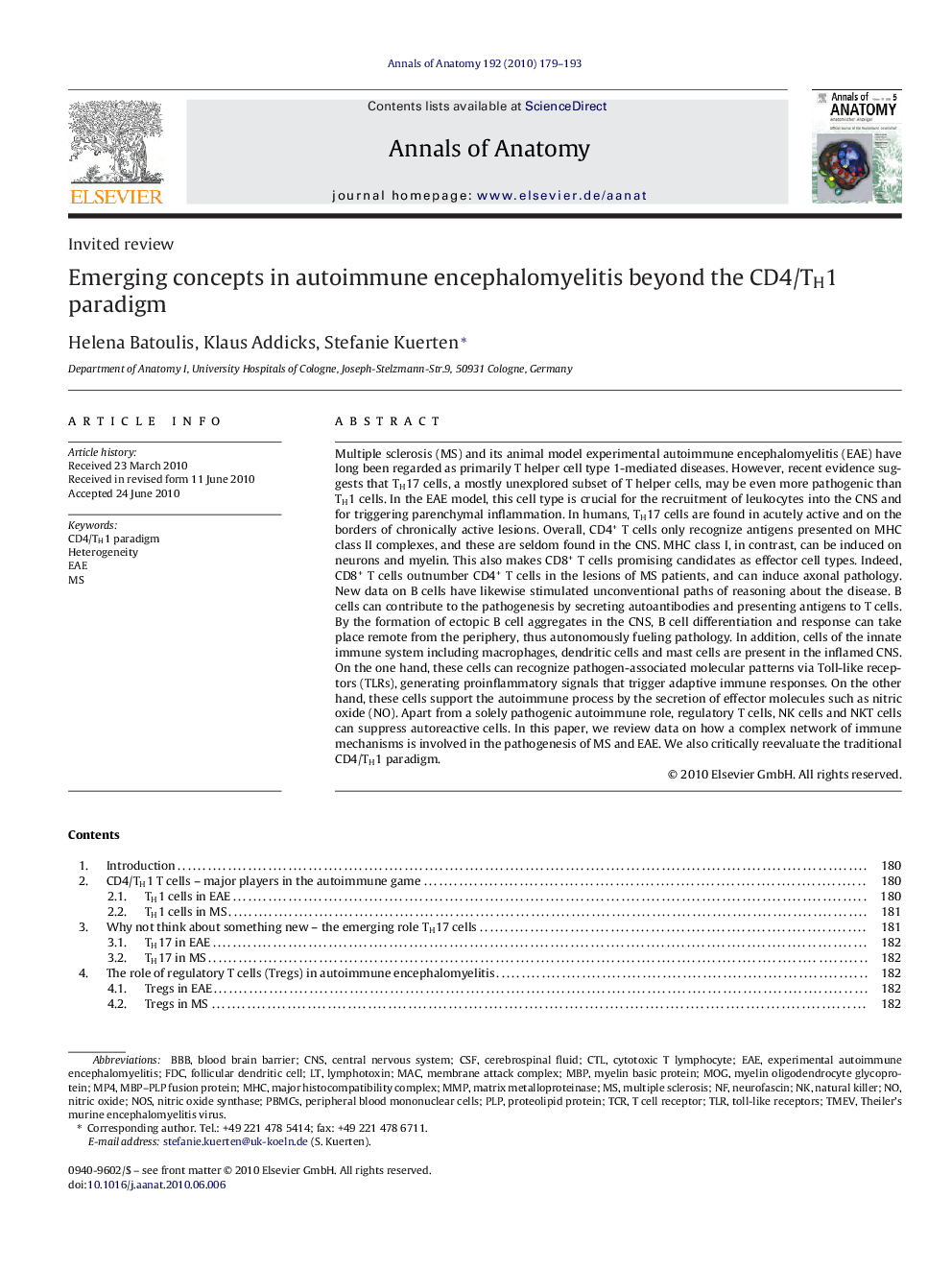| Article ID | Journal | Published Year | Pages | File Type |
|---|---|---|---|---|
| 8462212 | Annals of Anatomy - Anatomischer Anzeiger | 2010 | 15 Pages |
Abstract
Multiple sclerosis (MS) and its animal model experimental autoimmune encephalomyelitis (EAE) have long been regarded as primarily T helper cell type 1-mediated diseases. However, recent evidence suggests that TH17 cells, a mostly unexplored subset of T helper cells, may be even more pathogenic than TH1 cells. In the EAE model, this cell type is crucial for the recruitment of leukocytes into the CNS and for triggering parenchymal inflammation. In humans, TH17 cells are found in acutely active and on the borders of chronically active lesions. Overall, CD4+ T cells only recognize antigens presented on MHC class II complexes, and these are seldom found in the CNS. MHC class I, in contrast, can be induced on neurons and myelin. This also makes CD8+ T cells promising candidates as effector cell types. Indeed, CD8+ T cells outnumber CD4+ T cells in the lesions of MS patients, and can induce axonal pathology. New data on B cells have likewise stimulated unconventional paths of reasoning about the disease. B cells can contribute to the pathogenesis by secreting autoantibodies and presenting antigens to T cells. By the formation of ectopic B cell aggregates in the CNS, B cell differentiation and response can take place remote from the periphery, thus autonomously fueling pathology. In addition, cells of the innate immune system including macrophages, dendritic cells and mast cells are present in the inflamed CNS. On the one hand, these cells can recognize pathogen-associated molecular patterns via Toll-like receptors (TLRs), generating proinflammatory signals that trigger adaptive immune responses. On the other hand, these cells support the autoimmune process by the secretion of effector molecules such as nitric oxide (NO). Apart from a solely pathogenic autoimmune role, regulatory T cells, NK cells and NKT cells can suppress autoreactive cells. In this paper, we review data on how a complex network of immune mechanisms is involved in the pathogenesis of MS and EAE. We also critically reevaluate the traditional CD4/TH1 paradigm.
Keywords
TCrPBMCsTLREAEPLPNOSFDCMBPTMEVMMPCTLMP4MOGnatural killerProteolipid proteinexperimental autoimmune encephalomyelitisCNSBBBblood brain barrierperipheral blood mononuclear cellsfollicular dendritic cellcentral nervous systemLymphotoxincytotoxic T lymphocytematrix metalloproteinaseCSFCerebrospinal fluidmajor histocompatibility complexMHCMultiple sclerosisMACHeterogeneityNeurofascinNitric oxidenitric oxide synthaseTheiler's murine encephalomyelitis virusMyelin basic proteinmembrane attack complexmyelin oligodendrocyte glycoproteinT cell receptorToll-like receptors
Related Topics
Life Sciences
Biochemistry, Genetics and Molecular Biology
Cell Biology
Authors
Helena Batoulis, Klaus Addicks, Stefanie Kuerten,
